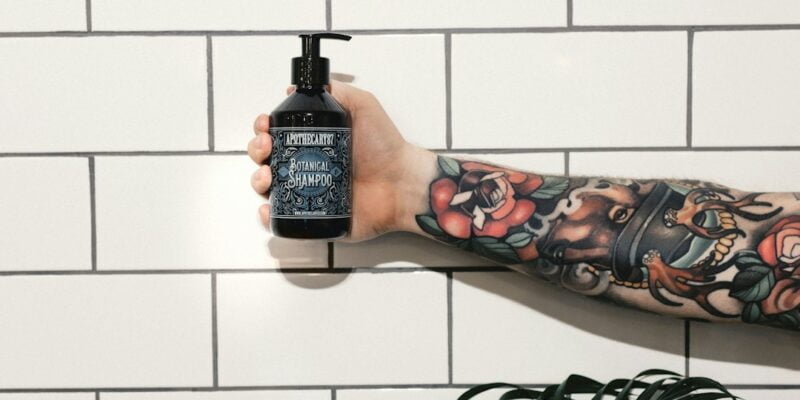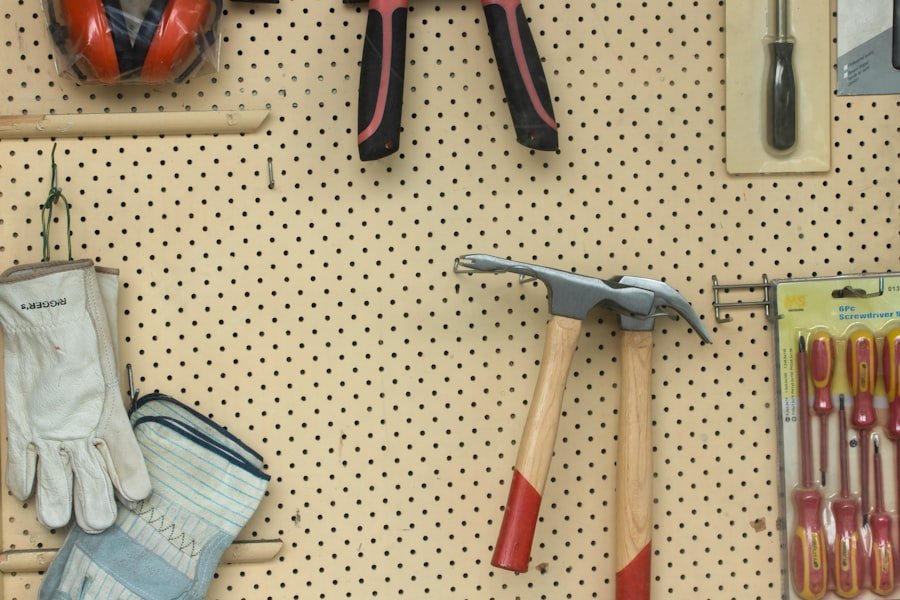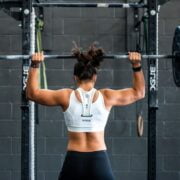
Unleashing Arm Power: The Incredible Benefits of Hammer Curls for Optimal Muscle Development
Hammer curls are a popular exercise that can provide numerous benefits for muscle development and injury prevention. This exercise targets the biceps, forearms, and wrists, making it a great addition to any workout routine. In this article, we will explore what hammer curls are, how to perform them correctly, and the benefits they offer for muscle development, grip strength, balanced arm development, injury prevention, and improved athletic performance.
Key Takeaways
- Hammer curls are a type of bicep curl that target the brachialis muscle in addition to the biceps.
- To perform hammer curls, hold dumbbells with a neutral grip and curl them up towards your shoulders.
- Hammer curls are more effective than traditional bicep curls for developing overall arm strength and size.
- Hammer curls can improve grip strength, balance arm development, prevent injuries, and enhance athletic performance.
- Incorporating hammer curls into your workout routine can help you achieve a well-rounded and functional upper body.
What are Hammer Curls?
Hammer curls are a variation of the traditional bicep curl exercise. While traditional bicep curls involve holding dumbbells with an underhand grip and curling them towards the shoulders, hammer curls involve holding the dumbbells with a neutral grip (palms facing each other) and curling them towards the shoulders. This slight variation in grip changes the emphasis of the exercise and targets different muscle groups.
During hammer curls, the primary muscles targeted are the brachialis and brachioradialis muscles in the forearms, as well as the biceps brachii muscles in the upper arms. The brachialis muscle lies underneath the biceps brachii and is responsible for flexing the elbow joint. The brachioradialis muscle runs along the forearm and helps with both elbow flexion and forearm supination.
How to Perform Hammer Curls
To perform hammer curls correctly, follow these step-by-step instructions:
1. Stand up straight with a dumbbell in each hand, palms facing each other (neutral grip).
2. Keep your elbows close to your sides and your upper arms stationary throughout the exercise.
3. Slowly curl the dumbbells towards your shoulders while exhaling.
4. Pause for a moment at the top of the movement, squeezing your biceps.
5. Lower the dumbbells back down to the starting position while inhaling.
6. Repeat for the desired number of repetitions.
It’s important to maintain proper form and technique during hammer curls. Avoid swinging your body or using momentum to lift the weights. Focus on controlled movements and a full range of motion. Start with lighter weights and gradually increase the weight as you become more comfortable with the exercise.
Hammer Curls vs. Traditional Bicep Curls
| Exercise Type | Primary Muscle Worked | Secondary Muscle Worked | Equipment Needed | Difficulty Level |
|---|---|---|---|---|
| Hammer Curls | Biceps Brachii | Brachioradialis, Forearm Flexors | Dumbbells | Intermediate |
| Traditional Bicep Curls | Biceps Brachii | Brachialis, Brachioradialis | Dumbbells, Barbell, Cable Machine | Beginner |
While both hammer curls and traditional bicep curls target the biceps, they have some key differences. Traditional bicep curls primarily target the biceps brachii muscles, while hammer curls also engage the brachialis and brachioradialis muscles in the forearms. This makes hammer curls a more comprehensive exercise for overall arm development.
Another difference is the grip used during the exercise. Traditional bicep curls use an underhand grip, which places more emphasis on the short head of the biceps brachii muscle. Hammer curls, on the other hand, use a neutral grip, which distributes the workload more evenly between the long and short heads of the biceps brachii muscle.
For individuals looking to develop overall arm strength and size, incorporating both hammer curls and traditional bicep curls into their workout routine can be beneficial. This allows for a more well-rounded approach to arm development.
Benefits of Hammer Curls for Muscle Development
Hammer curls offer several benefits for muscle development in the arms. By targeting the biceps, forearms, and wrists, this exercise can help build and strengthen these muscle groups.
The biceps brachii muscles are responsible for flexing the elbow joint and supinating the forearm (rotating it so that the palm faces up). By performing hammer curls, you can effectively target these muscles and promote their growth and strength.
In addition to the biceps brachii muscles, hammer curls also engage the brachialis and brachioradialis muscles in the forearms. These muscles play a crucial role in elbow flexion and forearm supination. By strengthening these muscles, you can improve your overall arm strength and size.
To maximize muscle development, it’s important to incorporate other exercises into your routine that target the same muscle groups. For example, exercises like chin-ups, pull-ups, and rows can help strengthen the biceps and forearms. By combining these exercises with hammer curls, you can create a well-rounded arm workout that promotes muscle growth and strength.
Hammer Curls for Improved Grip Strength

One of the key benefits of hammer curls is their ability to improve grip strength. Grip strength is important for overall fitness and athletic performance, as it plays a crucial role in activities that require holding onto objects or supporting your body weight.
During hammer curls, the neutral grip places more emphasis on the muscles responsible for gripping and holding onto objects. This can help strengthen the muscles in the hands, fingers, and forearms, leading to improved grip strength.
In addition to hammer curls, there are other exercises you can incorporate into your routine to further improve grip strength. These include exercises like farmer’s walks, deadlifts, and hanging exercises (such as pull-ups and chin-ups). By regularly performing these exercises, you can develop a strong grip that will benefit you in various activities both inside and outside the gym.
Hammer Curls for Balanced Arm Development
Another benefit of hammer curls is their ability to promote balanced arm development. Many individuals focus solely on traditional bicep curls, which primarily target the short head of the biceps brachii muscle. This can lead to an imbalance in arm development, with the short head being more developed than the long head.
By incorporating hammer curls into your routine, you can target both heads of the biceps brachii muscle more evenly. This helps create a more balanced and symmetrical appearance in the arms.
Having balanced arm development is not only important for aesthetics but also for functional fitness. Imbalances in muscle development can lead to poor posture, decreased range of motion, and increased risk of injury. By incorporating hammer curls into your routine, you can help prevent these imbalances and promote overall arm symmetry.
Hammer Curls for Injury Prevention
Hammer curls can also help prevent injuries to the wrists, forearms, and biceps. By strengthening these muscle groups, you can improve their ability to withstand stress and reduce the risk of strains or tears.
The brachialis and brachioradialis muscles in the forearms play a crucial role in stabilizing the elbow joint during movements like lifting or pulling. By strengthening these muscles through hammer curls, you can improve their ability to support the joint and reduce the risk of overuse injuries.
In addition, hammer curls can help strengthen the biceps brachii muscles, which are responsible for flexing the elbow joint. Strong biceps can help stabilize the joint and reduce the risk of strains or tears during activities that involve lifting or pulling.
By incorporating hammer curls into your routine, you can help prevent common injuries such as tennis elbow (lateral epicondylitis), golfer’s elbow (medial epicondylitis), and bicep tendonitis. These injuries are often caused by repetitive motions or overuse of the muscles in the arms. By strengthening these muscles through hammer curls, you can reduce the risk of these injuries and promote overall arm health.
Hammer Curls for Improved Athletic Performance
Hammer curls can also improve athletic performance in sports that require grip strength and arm endurance. Many sports, such as rock climbing, tennis, golf, and baseball, rely heavily on grip strength and arm endurance for success.
By regularly performing hammer curls and other exercises that target grip strength and arm endurance, athletes can improve their performance in these sports. Stronger grip strength allows athletes to hold onto objects more securely, while improved arm endurance allows them to maintain their performance for longer periods of time.
In addition to hammer curls, athletes can incorporate other exercises into their routine to further improve grip strength and arm endurance. These include exercises like wrist curls, reverse wrist curls, and forearm pronation/supination exercises. By regularly performing these exercises, athletes can enhance their performance in sports that require strong grip strength and arm endurance.
Incorporating Hammer Curls into Your Workout Routine
In conclusion, hammer curls are a versatile exercise that offer numerous benefits for muscle development and injury prevention. By targeting the biceps, forearms, and wrists, this exercise can help build and strengthen these muscle groups.
Hammer curls can improve grip strength, promote balanced arm development, prevent injuries to the wrists, forearms, and biceps, and enhance athletic performance in sports that require grip strength and arm endurance.
To incorporate hammer curls into your workout routine, start by performing them 2-3 times per week. Begin with lighter weights and gradually increase the weight as you become more comfortable with the exercise. Combine hammer curls with other exercises that target the same muscle groups for maximum muscle development and strength.
Remember to always maintain proper form and technique during hammer curls to avoid injury. Focus on controlled movements and a full range of motion. With consistent practice, you can reap the benefits of hammer curls and achieve your fitness goals.
FAQs
What are hammer curls?
Hammer curls are a type of weightlifting exercise that targets the biceps and forearms. They involve holding a weight in each hand with a neutral grip (palms facing each other) and curling the weights up towards the shoulders.
What are the benefits of hammer curls?
Hammer curls can help to develop and strengthen the biceps and forearms, which can improve overall arm strength and appearance. They can also help to improve grip strength and wrist stability.
How do hammer curls compare to other bicep exercises?
Hammer curls are a great complement to other bicep exercises like bicep curls and chin-ups. They target the brachialis muscle, which is not as effectively targeted by other bicep exercises. This can help to create a more well-rounded and defined bicep.
What equipment do I need to do hammer curls?
Hammer curls can be done with dumbbells, barbells, or resistance bands. You will also need a flat bench or chair to sit on.
How many sets and reps should I do?
The number of sets and reps you should do will depend on your fitness goals and current fitness level. Generally, it is recommended to do 3-4 sets of 8-12 reps.
Are there any precautions I should take when doing hammer curls?
As with any weightlifting exercise, it is important to use proper form and start with a weight that is appropriate for your fitness level. It is also important to warm up properly before starting the exercise and to stretch afterwards to prevent injury. If you have any pre-existing injuries or medical conditions, it is recommended to consult with a doctor or physical therapist before starting any new exercise program.
















